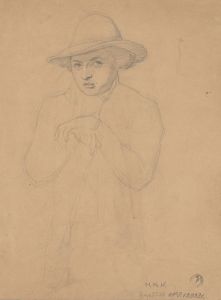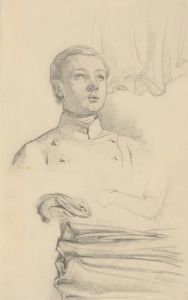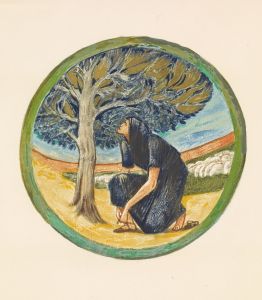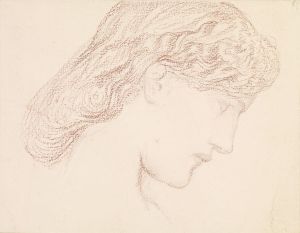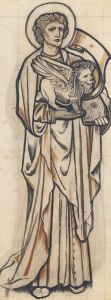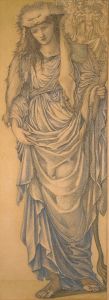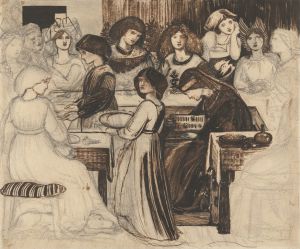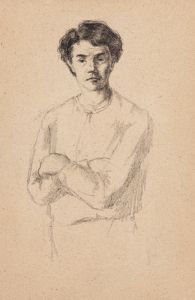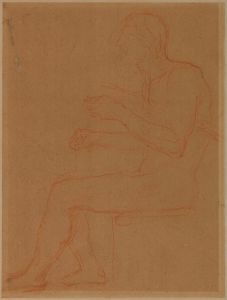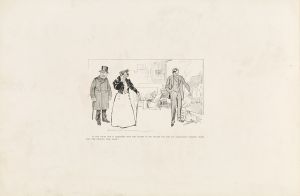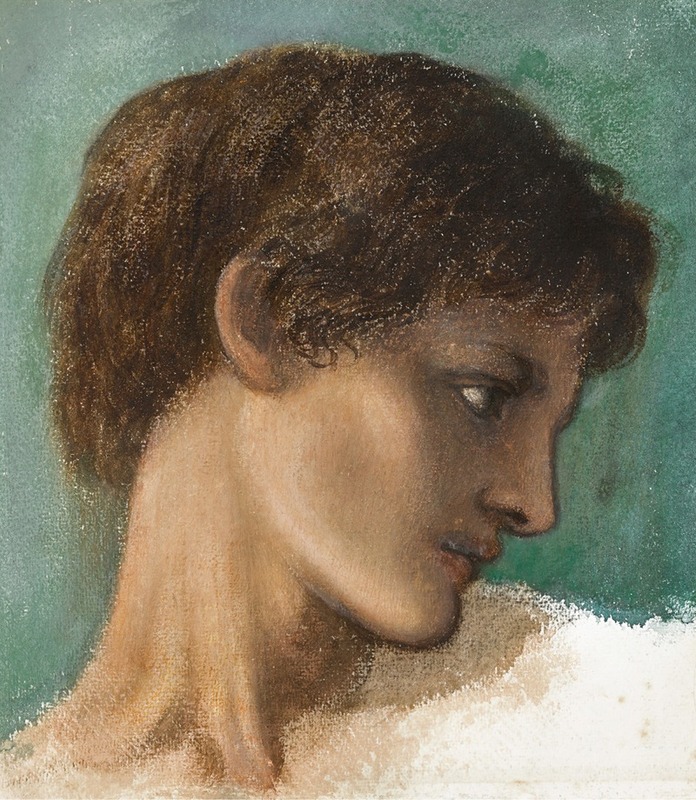
Head of a Young Man
A hand-painted replica of Sir Edward Coley Burne-Jones’s masterpiece Head of a Young Man, meticulously crafted by professional artists to capture the true essence of the original. Each piece is created with museum-quality canvas and rare mineral pigments, carefully painted by experienced artists with delicate brushstrokes and rich, layered colors to perfectly recreate the texture of the original artwork. Unlike machine-printed reproductions, this hand-painted version brings the painting to life, infused with the artist’s emotions and skill in every stroke. Whether for personal collection or home decoration, it instantly elevates the artistic atmosphere of any space.
"Head of a Young Man" is a drawing by the British artist Sir Edward Coley Burne-Jones (1833–1898), a prominent figure in the Pre-Raphaelite movement and later the Aesthetic Movement. The artwork is a study in pencil and chalk, showcasing Burne-Jones's exceptional skill in draftsmanship and his focus on idealized beauty. It is believed to have been created as a preparatory study for one of his larger works, though its exact connection to a specific painting or project remains uncertain.
The drawing depicts the head and shoulders of a young man, rendered with delicate shading and fine detail. The subject's face is serene and introspective, embodying the ethereal and otherworldly qualities often associated with Burne-Jones's figures. The artist's characteristic style is evident in the elongated neck, soft facial features, and the overall sense of timelessness in the composition. The work reflects Burne-Jones's interest in classical and Renaissance art, as well as his dedication to creating idealized forms that transcend the mundane.
"Head of a Young Man" exemplifies Burne-Jones's approach to art, which often involved meticulous studies of individual figures or elements before incorporating them into larger, more complex compositions. Such preparatory works were an essential part of his creative process, allowing him to refine his ideas and achieve the harmonious balance that defines his finished pieces.
The drawing is held in a private collection or museum, though its exact location and provenance are not widely documented. Like many of Burne-Jones's works, it continues to be admired for its technical precision and its embodiment of the artist's vision of beauty and spirituality.
Further details about the specific context or purpose of this drawing are not readily available, as it has not been the subject of extensive scholarly analysis. However, it remains an important example of Burne-Jones's artistic legacy and his contribution to 19th-century British art.





